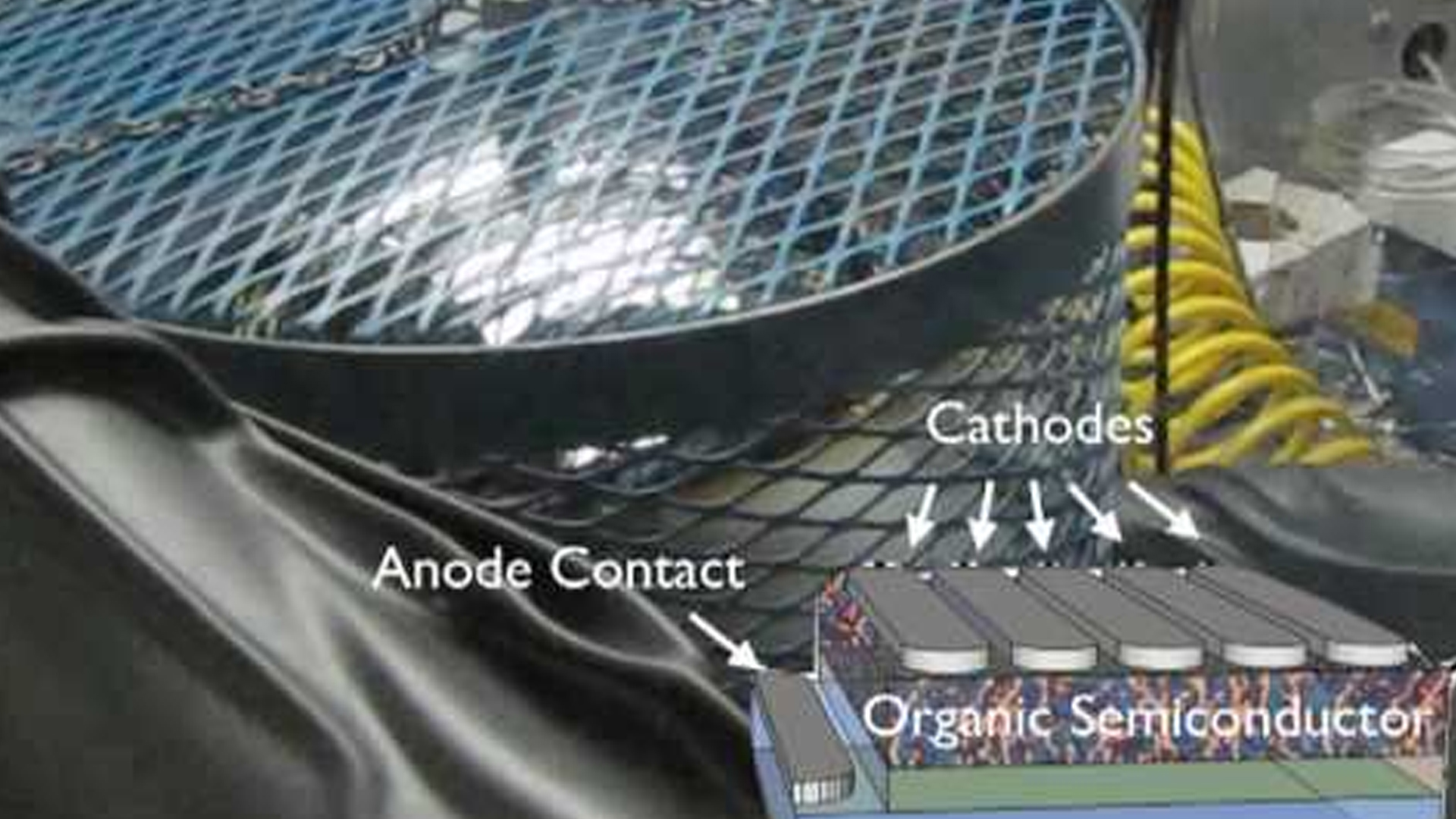News Article
Test Factory Solar Cell Foil Opened
Utrecht solar cell research receives four subsidies
Three research proposals by the Utrecht University in The Netherlands and one made in cooperation with Delft University of Technology, are together to receive a subsidy of 1.2 million euro from the Foundation for Fundamental Research on Matter (FOM) and energy provider Nuon. The new research projects are part of the Joint Solar Programme (JSP) which aims to drastically increase the efficiency of solar cells and to achieve substantial reductions in the costs of solar energy. Recently Nuon opened a test factory to produce affordable and versatile solar cell foil, a patented discovery made in 1996 by Utrecht University in collaboration with Akzo Nobel.
A total of 3,680,000 euro was allocated to 13 proposals. The Utrecht University projects that received funding are:
-Quantum-dot binary superlattice solar cells, Prof. Dr Daniël Vanmaekelbergh and Dr Arjan Houtepen (Delft University of Technology).
-Solar concentrators based on luminescent doped nanocrystals, Prof. Dr Andries Meijerink and Dr Celso de Mello Donegá.
-Quantum dot based thin film silicon solar cells, Dr Jatin Rath and Prof. Dr Ruud Schropp.
-Towards low cost luminescent concentrators, Dr Wilfried van Sark and Prof. Dr Ruud Schropp, Dr Celso de Mello Donegá.
UU research has made a key contribution to the production of flexible solar cells. On Wednesday 24 June, Nuon opened a solar cell foil test factory in Arnhem. Ruud Schropp, UU professor of experimental physics, is one of the inventors of the concept and production method for these solar cells. The test factory is the first in the Netherlands to produce flexible solar cells.
One of the components of the solar cells that currently dominate the market is an expensive silicon wafer. In the solar cell foil, this layer of silicon is several hundred times thinner. This not only reduces the material costs, but also the amount of energy required to manufacture the solar cells. In addition, the flexibility of the solar cell foil means it can be produced in rolls. This contrasts with the current silicon solar cells, which have to be composed of many small units. The flexible solar cells are unbreakable and due to their flexibility can easily be installed on roofs, facades, awnings or textiles. Because they are lightweight, it is inexpensive to ship the solar cells and they can be installed on roofs without expensive constructions.
‘We are now investigating how we can further improve the solar cell and the manufacturing process,' says Ruud Schropp, professor of experimental physics at the Utrecht University. ‘For instance, we are going to achieve higher energy yields from sunlight using quantumdots and new nanostructures, and develop even more inexpensive thin-layer deposition technologies. This should make energy generated using our solar cells more competitive with brown electricity in the very near future. Despite the current low price of oil, that may happen as quickly as 2012 in such countries as Spain and Italy and 2015 in the Netherlands. We will, however, have to remain alert to ensure that the interest in renewable energy doesn't wane.'
A total of 3,680,000 euro was allocated to 13 proposals. The Utrecht University projects that received funding are:
-Quantum-dot binary superlattice solar cells, Prof. Dr Daniël Vanmaekelbergh and Dr Arjan Houtepen (Delft University of Technology).
-Solar concentrators based on luminescent doped nanocrystals, Prof. Dr Andries Meijerink and Dr Celso de Mello Donegá.
-Quantum dot based thin film silicon solar cells, Dr Jatin Rath and Prof. Dr Ruud Schropp.
-Towards low cost luminescent concentrators, Dr Wilfried van Sark and Prof. Dr Ruud Schropp, Dr Celso de Mello Donegá.
UU research has made a key contribution to the production of flexible solar cells. On Wednesday 24 June, Nuon opened a solar cell foil test factory in Arnhem. Ruud Schropp, UU professor of experimental physics, is one of the inventors of the concept and production method for these solar cells. The test factory is the first in the Netherlands to produce flexible solar cells.
One of the components of the solar cells that currently dominate the market is an expensive silicon wafer. In the solar cell foil, this layer of silicon is several hundred times thinner. This not only reduces the material costs, but also the amount of energy required to manufacture the solar cells. In addition, the flexibility of the solar cell foil means it can be produced in rolls. This contrasts with the current silicon solar cells, which have to be composed of many small units. The flexible solar cells are unbreakable and due to their flexibility can easily be installed on roofs, facades, awnings or textiles. Because they are lightweight, it is inexpensive to ship the solar cells and they can be installed on roofs without expensive constructions.
‘We are now investigating how we can further improve the solar cell and the manufacturing process,' says Ruud Schropp, professor of experimental physics at the Utrecht University. ‘For instance, we are going to achieve higher energy yields from sunlight using quantumdots and new nanostructures, and develop even more inexpensive thin-layer deposition technologies. This should make energy generated using our solar cells more competitive with brown electricity in the very near future. Despite the current low price of oil, that may happen as quickly as 2012 in such countries as Spain and Italy and 2015 in the Netherlands. We will, however, have to remain alert to ensure that the interest in renewable energy doesn't wane.'





























